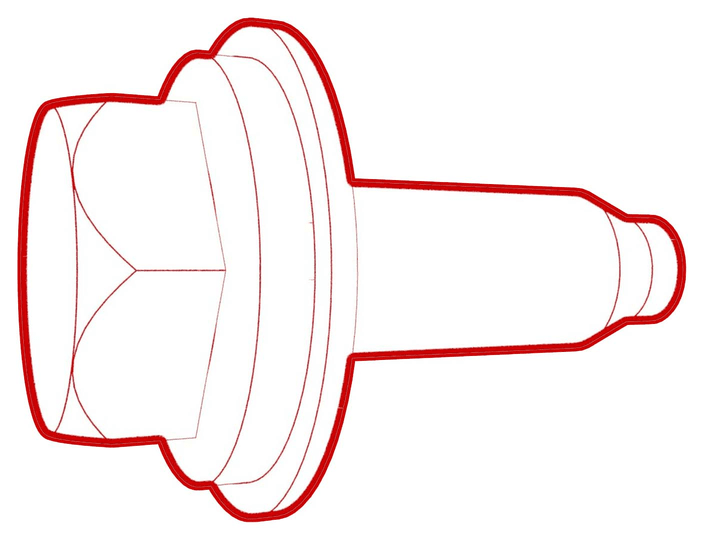Contactor - Negative - HV Battery (Non-Structural Pack) (Remove and Replace)
Correction code 16302002 1.38 NOTE: Unless otherwise explicitly stated in the procedure, the above correction code and FRT reflect all of the work required to perform this procedure, including the linked procedures. Do not stack correction codes unless explicitly told to do so. NOTE: See Flat Rate Times to learn more about FRTs and how they are created. To provide feedback on FRT values, email ServiceManualFeedback@tesla.com. NOTE: See Personal Protection to make sure wearing proper PPE when performing the below procedure. See Ergonomic Precautions for safe and healthy working practices.
- 1057602-00-A Ratchet, 1/4" Sq Dr, HV Insulated
- 1057603-00-A Ext Bar, Wobble, 1/4" Dr, HV Insulated
- 1057607-00-A Magnet, Flexible, HV Insulated, 18"
- 1133768-00-A Socket, 1/4" Dr, Deep,10 mm,Thin Wall, Insul
- 1076927-00-A Resistance meter, microohm, Hioki RM 3548
Only
technicians who have completed all required certification courses are permitted to
perform this procedure. Tesla recommends third party service provider technicians
undergo equivalent training before performing this procedure. For more information on
Tesla Technician requirements, or descriptions of the subject matter for third parties,
see HV Certification Requirements. Proper personal protective equipment (PPE) and insulating HV
gloves with a minimum rating of class 0 (1000V) must
be worn at all times a high voltage cable, busbar, or fitting is handled. Refer to Tech Note TN-15-92-003, High Voltage Awareness
Care Points
for additional safety
information.
Remove
- Remove the pyrotechnic battery disconnect. See Pyrotechnic Battery Disconnect (Remove and Replace).
-
Remove the clip that attaches the HV battery ancillary bay harness to the HV battery fast charge contactor.
-
Disconnect the electrical harness from the HV battery negative contactor connectors.
-
Remove the insulator caps from the HV battery negative contactor.
-
Remove and discard the bolt that attaches the HV battery negative contactor to the negative busbar.
-
Remove and discard the nut that attaches the HV battery negative contactor to the battery terminal.
-
Remove the nuts (x2 or x3) that attach the HV battery negative contactor to the ancillary bay, and then remove the contactor from the ancillary bay.
TIpIf the contactor is equipped with 3 nuts, one of the nuts is partially obscured by the lip of the ancillary bay. To easily remove the nut, make sure to use the special tools listed in this procedure and use the magnetic insert to help guide the insulated socket onto the nut. Refer to the following video for a demonstration of how to approach this nut.
Install
- Perform a zero adjust of the Hioki resistance meter in preparation to measure resistances later in this procedure. See Resistance Meter (Zero Adjust).
- Use an IPA wipe to clean the high voltage mating surfaces of the HV battery terminal, negative busbar, and the HV battery negative contactor.
-
Install the HV battery negative contactor into the ancillary bay, and then install the nuts (x2 or x3) that attach the contactor into the ancillary bay.
 8 Nm (5.9 lbs-ft)
8 Nm (5.9 lbs-ft) -
Install a new nut to attach the HV battery negative contactor onto the HV battery terminal, and then mark the nut with a paint pen after it is torqued.
 9 Nm (6.6 lbs-ft)
9 Nm (6.6 lbs-ft) -
Use the Hioki resistance meter to measure the resistance at the HV joint between the HV battery negative contactor and the HV battery terminal.
NoteThe maximum acceptable resistance is 0.110 mΩ (110 μΩ). There is too much resistance in the High Voltage joint. Remove the fastener, clean areas with isopropyl alcohol, install fastener back and test again
Figure 1. Generic Measurement - Actual busbars and fasteners might appear different -
Install a new bolt to attach the HV battery negative contactor onto the negative busbar, and then mark the bolt with a paint pen after it is torqued.
 9 Nm (6.6 lbs-ft)
9 Nm (6.6 lbs-ft) -
Use the Hioki resistance meter to measure the resistance at the HV joint between the HV battery negative contactor and the negative busbar.
NoteThe maximum acceptable resistance is 0.060 mΩ (60 μΩ). There is too much resistance in the High Voltage joint. Remove the fastener, clean areas with isopropyl alcohol, install fastener back and test again
Figure 2. Generic Measurement - Actual busbars and fasteners might appear different -
Install the insulator caps to the HV battery negative contactor.
-
Connect the electrical harness to the HV battery negative contactor connectors.
-
Install the clip that attaches the HV battery ancillary bay harness to the HV battery fast charge contactor.
- Measure the voltage across the pyrotechnic battery disconnect mount points, and then install the pyrotechnic battery disconnect. See Pyrotechnic Battery Disconnect (Remove and Replace).